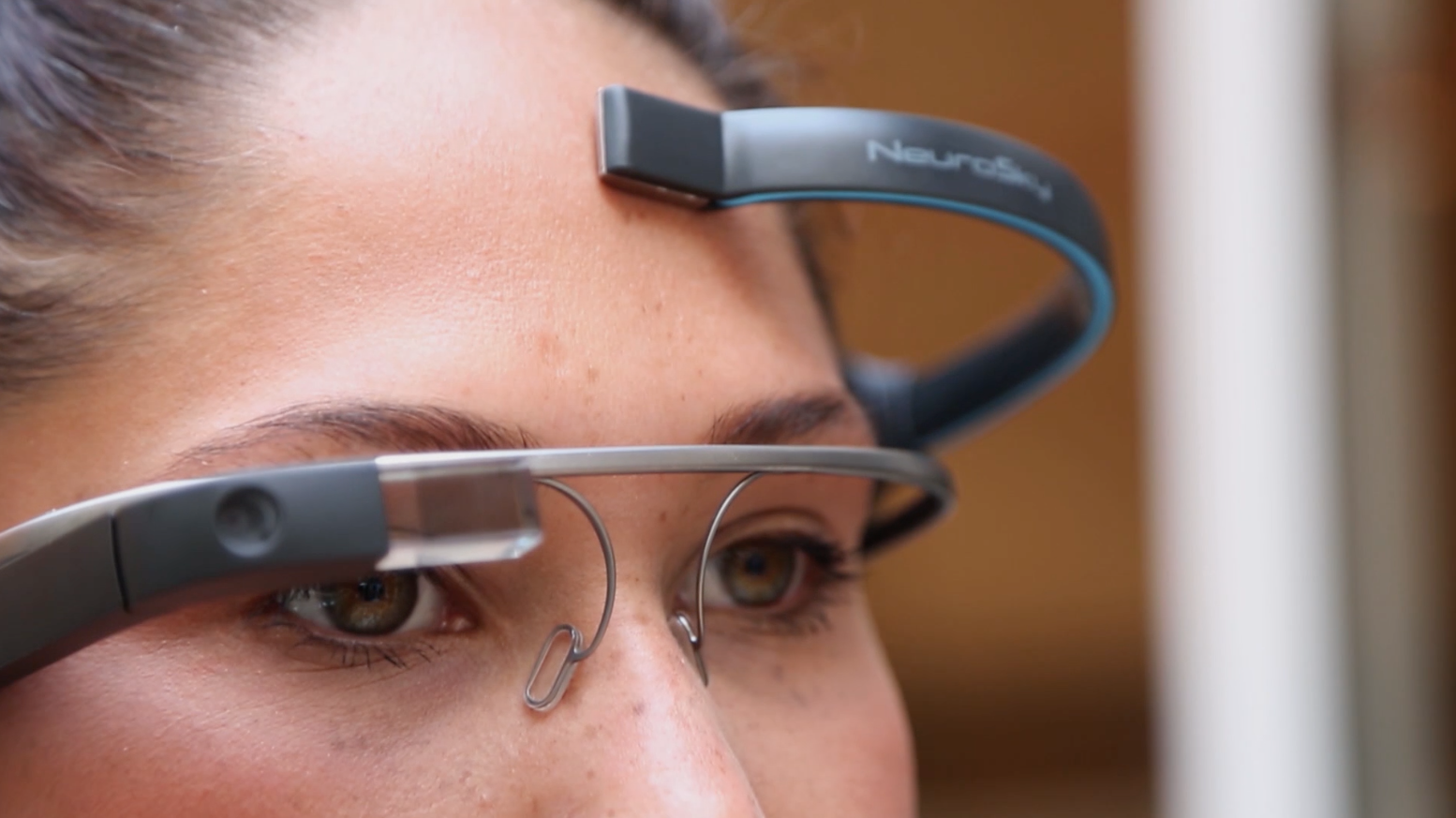Google Glass given 'mind control' powers
New third-party app uses a headset that measures brain activity to let users control Glass just by thinking about it

New technology that lets wearers control Google Glass using brainwaves could let people snap a photo and upload to the internet just by thinking about it.
Created by London user experience company This Place, the MindRDR app uses a third-party EEG headband (electroencephalography) to measure electrical activity in the brain and convert these signals into instructions for Glass.
Google Glass, which launched in the UK last month, is usually controlled by voice commands or via a touchpad located on the arm of the device.
Although the MindRDR technology might appear frivolous at first glance, its creators hope technology like it could one day help individuals suffering from locked-in syndrome or quadriplegia the opportunity to use technology like Glass to interact with the world.
Google itself does not officially support MindRDR (or offer it in the Glass app store) but a spokeswoman for the company told the BBC: "Of course, we are always interested in hearing about new applications of Glass and we've already seen some great research from a variety of medical fields from surgery to Parkinson's."
"Google Glass cannot read your mind,” the spokeswoman added.
In its current implementation the MindRDR only has two ‘controls’ – a 'yes' signal triggered by a peak in electrical brain activity and a 'no' signal triggered by a trough in activity.
This lack of nuance is one of the defining challenges facing current-generation EEG technology. Although the hardware used to detect brain activity are now fairly cheap (This Place used a NeuroSky headset that costs less than £100), the fidelity of their measurements and the difficulty for users to broadcast ‘precise’ brain signals will mean that it's many years before we're all uploaded snaps to Instagram just by thinking about it.
The creators of MindRDR recognise this and for that reason have launched their app on the developer community GitHub, allowing programmers around the world to take a look at their code and hopefully tweak it to make it more useful.
Join our commenting forum
Join thought-provoking conversations, follow other Independent readers and see their replies
80Comments